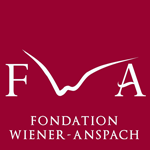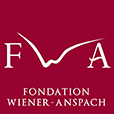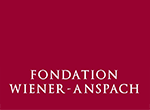
Photo: Frédéric Raevens
On Saturday 8 October 2022, the Wiener-Anspach Alumni Network organised a visit to the International Carnival and Mask Museum in Binche, directed by our Alumna Clémence Mathieu. A Wiener-Anspach Postdoctoral Fellow in Cambridge in 2012-2013, Clémence granted us this interview, published in our 2022 Activity Report.
Your initial area of study was the history of architecture. Could you summarize your background at the time of your application for a Wiener-Anspach fellowship in 2012-2013?
After a Master in Art History from the ULB, followed by a postgraduate master in conservation of monuments and sites from KU Leuven, I did my PhD between ULB and KUL, analysing the manor houses of the end of the Renaissance. It was a socio-architectural research project. I studied both the gentry and their buildings, and how the gentry behaved with the high nobility. At the time, the English high nobility was copying the European high nobility from present Belgium, who were themselves influenced by the Italian Renaissance. After completing my PhD, I wanted to see how the Renaissance had reached England. We know Antwerp played a major role as a printing center in the 16th century; Italian Renaissance motifs were printed in Antwerp and sent to London. These books influenced the high nobility, such as the Tudors. I wanted to see how the English gentry behaved in that context. Were they also influenced by the Italian Renaissance? Were they more attached to local, medieval architectural types?
I knew that East Anglia hosted many remarkable manor houses. What was also interesting was their proximity both to the seaside – hence to materials such as bricks – and to London, where books arrived. I selected around a hundred manor houses and visited all of them. It was important to be on-site to analyse the different components and see how European architecture and East Anglian architecture were brought together. My research project in Cambridge was even more interesting than my PhD because in Belgium nearly 90 percent of manor houses have been destroyed.
What were your plans for after your Wiener-Anspach fellowship?
During the last six months of my fellowship I looked for another postdoc research opportunity, but nothing came up. Also, I had come to realize that academic research is a very isolated activity, especially in my field. There wasn’t a community of researchers around me and feeling isolated really does not match my personality. I therefore decided to go on the job market, and this is how I started working as a scientific collaborator in this museum, in April 2014.
A museum that wasn’t exactly related to your studies!
It wasn’t at all my field, but my year in Cambridge definitely made a difference when I applied. The selection committee was aware of my research skills and of my international network. I told them I was curious by nature and would be happy to focus on this new topic. I was very lucky to be given this chance. I worked for three years as a scientific collaborator, which really means being a curator and setting up the exhibitions. Usually in bigger museums you have an administrative director and several curators specialized in different areas, but this is a small museum, where the director also plays a scientific role and there is only one curator, or scientific collaborator.
This museum was the fulfilment of one man’s life project: Samuel Glotz, a historian from Binche.
Yes, in the 1950s Glotz wanted to open a museum devoted to the Carnaval de Binche. However, when he started his research he discovered that the carnival had very deep ritual roots, linked with animism and other beliefs dating back to antiquity, and even before. Comparing carnivals across Europe, he realized there was a common cultural background to these masquerades, a deep meaning that had been forgotten, which recall African and Asian rituals. He completely changed his focus and decided to create a museum devoted to masks, masquerades and carnivals from all over the world. Integrating carnivals to the world of masquerades and masked rituals was a very unique approach at that time. There was no such museum then, and even today there is no other museum like ours. You will have ethnographic museums like the Quai Branly in Paris, but they only consider masquerades from all around the world, without putting carnivals on the same level.
Glotz collected between 3,000-4,000 masks and costumes from all over the world, and the museum opened in 1975. It really was the project of his life. The mayor of Binche granted him the use of this building, which is still the property of the city. It was built in the 18th century by the Augustinians, then in the 19th century it was bought by the city, which turned the religious college into a public one. It was empty for a few years between the end of the 1960s and the early 1970s, before being partially renovated before the inauguration of the museum. Today we have about 12,000 pieces.
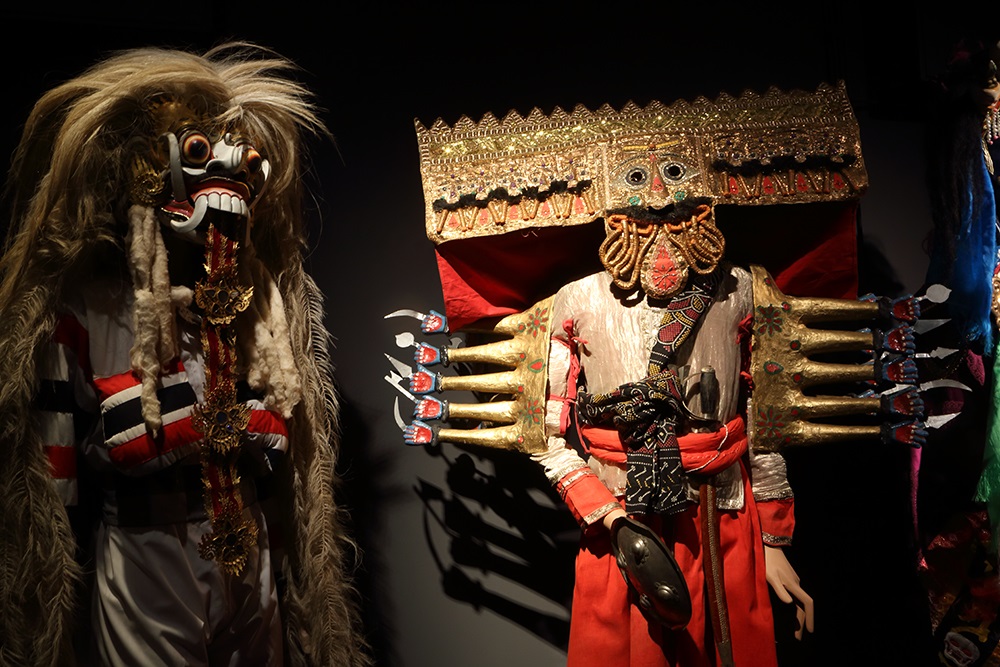 Nowadays museums are confronted with the sensitive issue of ethical acquisitions. How does this affect your work?
Nowadays museums are confronted with the sensitive issue of ethical acquisitions. How does this affect your work?
We pay considerable attention to the issue of ethical acquisition, particularly important in our field, ethnology, which deals with communities’ identities. At the time of Glotz, there was less awareness, so we do have pieces of unknown origin in our collection. The government asked us to prepare a report last year, in which we listed our doubts. For example, we have some pre-Columbian masks from Mexico and Guatemala. We think that they were bought in the 80’s-90s by an antiquarian in Brussels, but we have serious doubts about the way in which they were acquired. We no longer acquire any pieces from antiquarians, or if we exceptionally do, we have to be able to track the complete history of the piece. What we mostly do is either go on the field – we also do field research – or make connections with ethnologists who themselves go on the field. We try to avoid having too many intermediaries. For instance, we have acquired pieces coming from the Amazonian region through a Flemish researcher, Daniel De Vos, who has been going there for over thirty years. We know he respects the people and he informed them that he was buying the pieces for us. When we organized an exhibition two years ago, we invited a member of this community. This is of course the best way to proceed, but it’s not always easy.
Can you tell us more about the museum’s own field work?
I can give you a few examples. Three years ago we went to French Guyana in view of an exhibition about the Carnival of Cayenne. We also went to Japan, and now we’re planning to go to North America to collect masks from the Cherokees. And of course, we travel considerably in Europe.
What were the main challenges the museum was facing when you joined it?
People often think that we are just a museum devoted to the Carnival of Binche, because we’re located here and because the name of our museum can be misleading. So, one of the main challenges remains how to change the museum’s image. Also, because Binche is not very well connected, not many tourists visit the city, except during the carnival of course. In order to attract people, we have developed a dynamic exhibition policy (2 to 3 exhibitions per year). Another challenge is how to show the intangible heritage behind the tangible masks and costumes: the music, the rituals, the gestures, the dances, the positions, the words. We are continuously working on how to present this intangible reality in the best possible way. In the section about the Carnival of Binche, there are for instance many things to touch, to smell and other interactive elements. This is less present in the section on the masks from the world, which we aim to renovate in 2025.
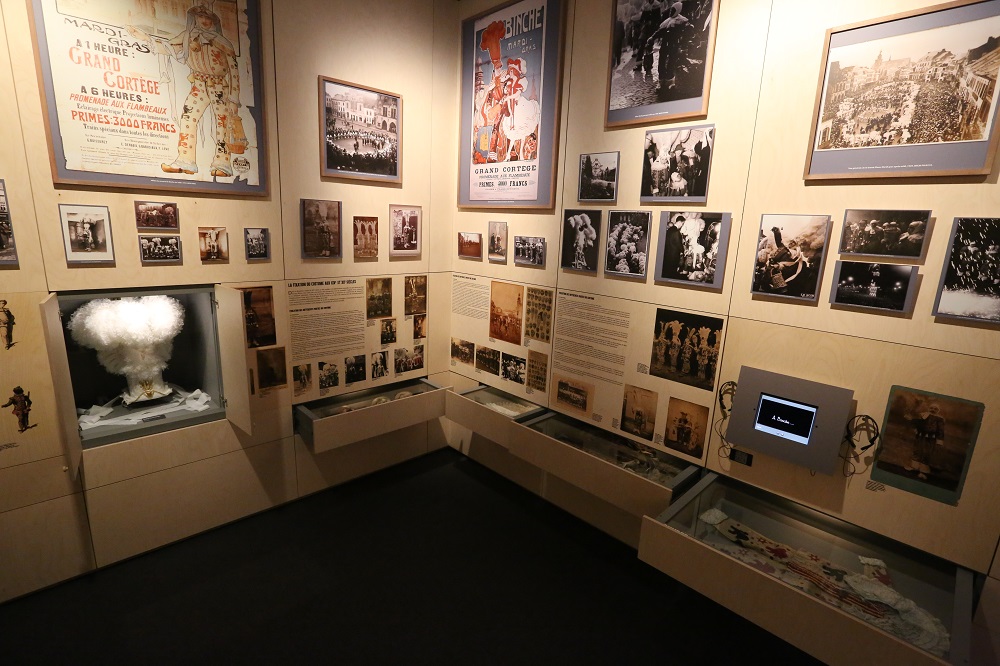 The museum recently opened a section about Wallonia. Was this a way to involve the local community?
The museum recently opened a section about Wallonia. Was this a way to involve the local community?
When I became director in 2017, I thought we absolutely had to reach out and connect with local communities. You can be renowned internationally, but if you don’t have a link with the local community, you are not going to be able to survive. We changed our events so as to attract different audiences: children’s activities, screening, conferences… Also, when we built the section devoted specifically to the Carnival of Binche, we contacted the different carnival societies of the region and we asked them to give us their point of view on how the exhibition should look. We also told them that they could deposit their archives here, and that the Museum could become a sort of hub. We felt the difference after we opened the section: more people from Binche and its surroundings started returning to the museum, which they hadn’t visited in years, and they were happy to reconnect with it.
The Convention for the Safeguarding of the Intangible Cultural Heritage was adopted by UNESCO in 2003. What role has this convention played so far?
The convention made people realize the existence of this heritage, its importance and how it’s linked with identity. When the Carnival of Binche was recognized by UNESCO as a “masterpiece of the oral and intangible heritage of humanity”, in 2003, it brought a lot of pride to the local community. It also attracted many tourists and gave the city an international recognition. I think that changed the mentality of people, the way in which they perceived the carnival. They realized that there was a deeper meaning to it. Other examples of intangible heritage which were slowly disappearing have been brought back to life thanks to the convention.
Today we all have to wear a very different kind of mask, for reasons that have nothing to do with the carnival. Has this been a topic of discussion here at the Museum?
These masks are protection masks that are profane. An ethnological museum like our usually deals with ritual masks, which are used for purposes linked with the different cycles of life, and the beliefs of people who are wearing them. For example, the belief that when you wear a mask you are not yourself anymore but a spirit which has entered the mask. You connect with the spirit in order to heal or to celebrate a funeral, or to make a transition from childhood to adulthood, or from one season to another, or to chase away evil.
With profane masks, the function is often a protective one: gas masks, fencing masks, beekeeper masks, or the masks that were used in Venice against the plague in the 16th and 17th centuries. This “plague doctor mask” had a long nose resembling the beak of a bird. At the bottom of the nose, people would put medicinal herbs that were supposed to protect them against the disease. This mask was later adopted as a carnival mask, marking a passage from the secular to the ritual. What’s interesting is that the code behind the use of the mask is the same whether it’s a profane or ritual mask: it changes the way you see the other person, it changes the way you behave, the way you move, the way you breathe. This is a specificity of the mask, and by mask I mean even smaller things such as a clown nose. Anything that changes an element of the face is a mask. We all experiment this now with sanitary masks, of course in an unpleasant way.
Could you briefly present the forthcoming exhibitions?
The first one – “Bouffons !” (25 February – 11 September 2022) – is about the buffoon, a character from the 15th-16th century (le bouffon du roi or fou du roi), which was adopted by the commedia dell’arte and, through theatre companies traveling all over Europe, reached the carnivals. It is a very interesting character, funny and devilish at the same time, which is also a characteristic of the carnival. Carnival is a time in which the world is turned upside down, the gates of the underworld open and demons invade the Earth, and for a short time we embrace the darkness before chasing it away so we can start the new year. The following exhibition – “Ritual fabrics. The intertwining of the invisible” – has been postponed to the beginning of 2023. The idea came to me because all the costumes in our collection are so beautiful, and yet we have never presented them as textile works. We will present these fabrics as a support for rituals, but we will also show how the textile itself can reach a high level of symbolism.
